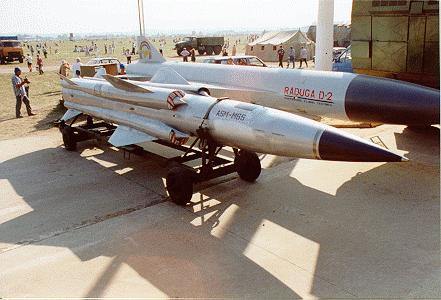
The P-270 Moskit (Russian: П-270 «Москит»; English: Mosquito) is a Russian supersonic ramjet powered anti-ship cruise missile. The missile system was designed by the Raduga Design Bureau during the 1970s as a follow up to the “SS-N-9 Siren”. The Moskit was originally designed to be ship-launched, but variants have been adapted to be launched from land (modified trucks), underwater (submarines) and air. The missile can carry conventional and nuclear warheads. The exact classification of the missile is unknown, with varying types reported. This uncertainty is due to the secrecy surrounding an active military weapon. The Moskit is one of the missiles known by the NATO codename SS-N-22 Sunburn.
The missile has been purchased and exported to the People’s Liberation Army Navy (China) and Indian Navy (India).
It reaches a speed of Mach 3 at high altitude and Mach 2.2 at low-altitude. This speed is 4.25 to 3 times more than speed of the subsonic American Harpoon. When slower missiles, like the Harpoon or the French Exocetare used, the maximum theoretical response time for the defending ship is 120 to 150 seconds. This long response time provides time to launch countermeasures and employ jamming before deploying “hard” defense systems such as missiles and close-in weapon systems. But the high speed of the 3M80 “Mosquito” missiles reduce the maximum theoretical response time for the defending ship to 25 to 30 seconds. This short response time makes jamming and countermeasures very difficult, and firing missiles and quick-firing artillery even more difficult. The Moskit was designed to be employed against smaller NATO naval groups in the Baltic Sea (Danish and German) and the Black Sea (Turkish) and non-NATO vessels in the Pacific (Japanese, South Korean, etc.), and to defend the Russian mainland against NATO amphibious assault. The missile can perform intensive anti-defense maneuvers with overloads in excess of 10g, which completed for 9 km before the target.
